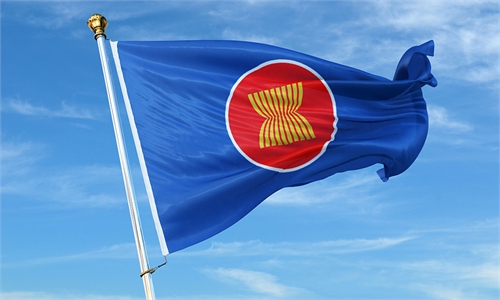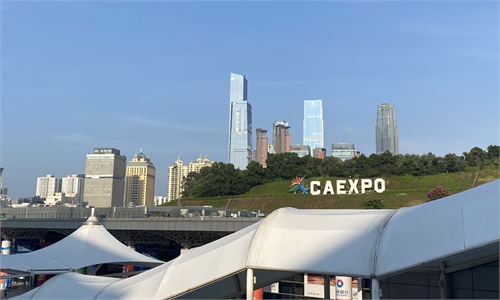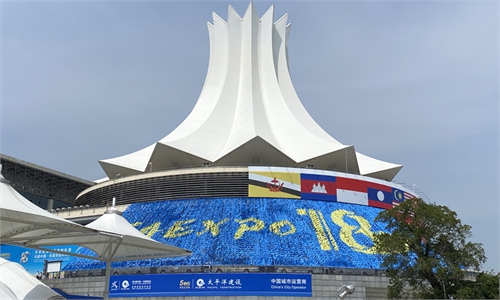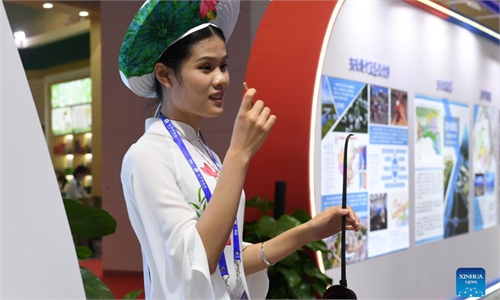Wang Yi's visit to neighbors expected to improve cooperation, not to counter US influence
US’ interference goes against interests in Asia-Pacific region, doomed to fail: observers
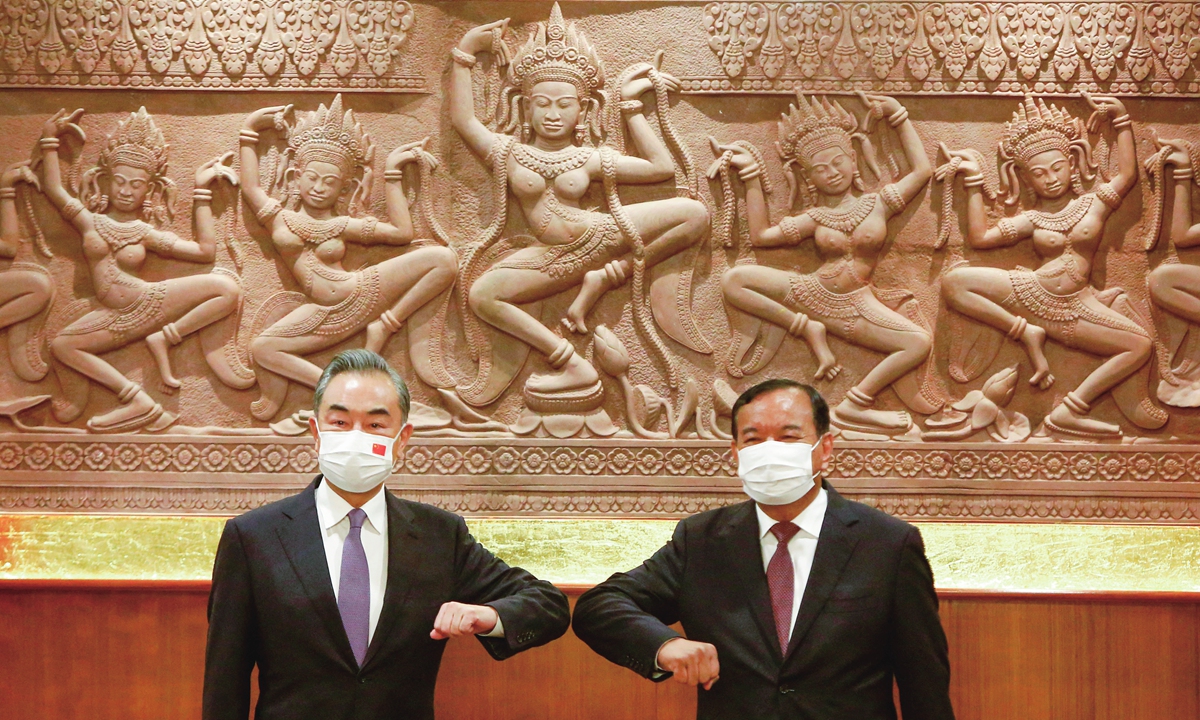
Chinese State Councilor and Foreign Minister Wang Yi meets Cambodia's Foreign Minister Prak Sokhonn (right) with an elbow bump during a meeting at the Ministry of Foreign Affairs in Phnom Penh on Sunday. Photo: AFP
Chinese State Councilor and Foreign Minister Wang Yi made a good start wrapping up the first stop in Vietnam and is visiting Cambodia on Sunday, part of the week-long tour to four neighboring countries - Vietnam, Cambodia, Singapore and South Korea - which Chinese experts have stated is significant in enhancing the cooperation across economic and trade issues in addition to building on political mutual trust and a shared vision of the security landscape across the region.Coming about two weeks after US Vice President Kamala Harris' trip to the region that sought to pit countries against China, Wang's trip showed that China and the neighboring countries are aiming to work in partnership to strengthen diplomatic relations and guard against the interference and instigation from outside forces, experts noted.
Among the four countries on Wang's itinerary, Vietnam and Singapore hosted Harris in August, while Cambodia and South Korea welcomed US Deputy Secretary of State Wendy Sherman in June and July, respectively.
Marking the 30th anniversary of dialogue relations between China and the 10-member Association of Southeast Asian Nations (ASEAN), the past three decades have seen China-ASEAN relations grow closer and stronger despite trials and hardships. Wang's visit at the invitation of his counterparts in the four countries reflects the determinations of China and ASEAN member states to build a community with a shared future are opening a new chapter toward China-ASEAN common prosperity.
On Friday (local time), Wang and Vietnamese Standing Deputy Prime Minister Pham Binh Minh co-chaired the 13th Meeting of the China-Vietnam Steering Committee for Bilateral Cooperation was held in Hanoi, according to the Chinese Foreign Ministry.
Wang said at the meeting that the two sides should enhance mutual trust between the two peoples, and guide public opinion foundation for bilateral relations, work for stronger momentum of two wheel-driven economy, trade and investment, accelerate the connectivity and cooperation under the Belt and Road Initiative (BRI) and the strategy of Two Corridors and One Economic Circle, and strive for further breakthroughs in bilateral trade volume in 2021.
Wang emphasized the two sides should cherish the hard-won peace and stability in the South China Sea, place the maritime issues at an appropriate position in bilateral relations, avoid any unilateral action that may complicate the situation and escalate disputes, jointly caution and guard against the interference and instigation from forces outside the region, and send a positive signal to the international community that the peoples of China and Vietnam have the very ability and wisdom to properly manage their differences and continuously expand their cooperation.
Wang also stressed a desire to speed up the ratification of the Regional Comprehensive Economic Partnership (RCEP) free trade agreement at a meeting with Vietnamese Foreign Minister Bui Thanh Son on Saturday, the Xinhua News Agency reported.
During his visit in Vietnam, the Chinese foreign minister said China planned to donate 3 million vaccine doses to the country, which remains under a lockdown to contain a COVID-19 surge, media reported.
Following his first stop, Wang arrived in Cambodia on Sunday, where he is expected to meet with Cambodian Prime Minister Hun Sen and other officials to discuss COVID-19 and other regional issues, media reported.
This tour is a positive move following the invitation of the four neighboring countries which are China's important partners, and the aim of the visit is to push forward cooperation in various fields rather than counter the US influence in the region, said Zhuang Guotu, president of Chinese Association of Southeast Asian Nations and distinguished professor of Xiamen University, when refuting the claims by some foreign media that Wang's visit is to counter the US' attempt to rebalance the Asia-Pacific region.
The visit can help better manage the disputes in regional security, consolidate high-level exchanges and set future direction for pragmatic cooperation across a range of fields, Zhuang told the Global Times, warning the countries in the region to be vigilant against interference by forces outside the region.
While calling Harris' visit, "at the wrong time" and "to the wrong target," can only "have a negative effect," Chinese observers believe Wang's visits show relations resilient to US efforts to destabilize region.
Although the US has adopted measures trying to drive a wedge between neighboring countries and China, the friendly relations between China and its neighbors will not be damaged. Cooperation with China is in their interests and they are not willing to choose sides between China and the US, Gu Xiaosong, director of the ASEAN Institute of Hainan Tropical Ocean University in South China's Hainan Province, told the Global Times on Sunday.
Given that China shares common interests with the regional countries and regional cooperation across a wide range of fields have been strategically advanced, the win-win cooperation does not target any third party, Gu said, noting that the US' efforts to disrupt regional harmony would not succeed.
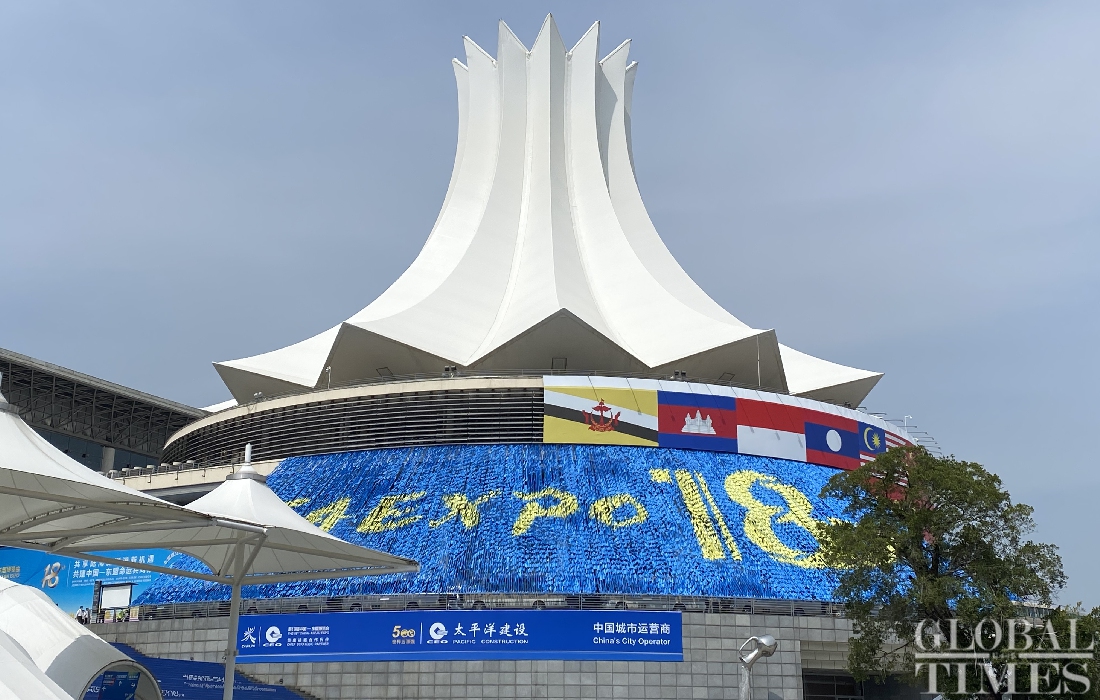
China-ASEAN Expo under the spotlight Photo:Zhang Dan/GT
RCEP needed more than ever before
During the 18th China-ASEAN Expo and China-ASEAN Business and Investment Summit, Chinese customs on Saturday, for the first time ever, published the China-ASEAN Trade Index - a barometer of bilateral trade which would provide reference for government and foreign trade enterprises.
The 2020 index stood at 241.09 points, up 19.64 percent compared with the pre-pandemic level of 2019, and up 141.09 percent compared with 2010, showing bilateral trade has grown steadily, Chinese customs said.
Robust bilateral trade would be further boosted after the implementation of the RCEP - the world's largest trade pact inked on November 15, 2020 that covers the world's one-third population with a combined GDP of $26.2 trillion, or 30 percent of global GDP.
The free trade framework would surpass the US-Mexico-Canada Agreement and the Comprehensive and Progressive Agreement for Trans-Pacific Partnership (CPTPP).
ASEAN member states already enjoy a priority position within China's foreign policy setting and is a key area in jointly building a high quality Belt and Road, Chinese Vice President Wang Qishan said at the opening ceremony of the expo and the summit on Friday in Nanning, capital of South China's Guangxi Zhuang Autonomous Region.
At this new starting point, "China is committed to promoting better development of bilateral ties in the next 30 years," Vice President Wang said.
Once ratified by three-fifths of the 15 signatories - six ASEAN countries and three non-ASEAN countries - the RCEP deal will come into effect after 60 days. According to the Secretary-General of ASEAN, China, Singapore and Japan have finished ratification as of late June.
The early implementation of RCEP is key to post-pandemic recovery throughout the Asia-Pacific region and that makes the trade deal pressing than ever before, guests and participants at the expo and summit agreed.
"RCEP will strengthen policy coordination for the countries in the post-pandemic economic recovery. That would help deal with emergency affairs, including supply chain disruption, and promote connectivity and sustainability," Tan Sri Dato' Azman Hashim, Chairman of Malaysia-based AmBank Group, said at a special dialogue on RCEP Leads Future Growth at the expo on Friday.
As an important engine, RCEP member nations' combined GDP is likely to grow from the current proportion of 30 percent to 50 percent in future, Hashim predicted. "You can imagine how many opportunities it will bring to the economies." According to the Asia Development Bank, RCEP members are expected to gain $174 billion in real income collectively by 2030.
Zhang Shaogang, the deputy head of the China Council for the Promotion of International Trade said at the same forum that the biggest achievement of RCEP is to build a unified huge market of 15 countries, which would enlarge the space for entrepreneurs to transfer within the enormous market.
"From the regional perspective, the production chains, value chains and supply chains in the Asia-Pacific region will have new optimization and reorganization in the future. When we look at the production structure in the region 10 years later, a substantial change will occur," Zhang said.
After measuring the gains and losses, especially a loss of competitive edge in apparel exports to Vietnam which would enjoy duty-free access to the region's largest market, Bangladesh decided to join the RCEP, a senior official of the country's commerce ministry told The Business Standard on September 7.
Trade between China and ASEAN increased from $8.36 billion in 1991 to $685.28 billion in 2020, according to Chinese customs data. Despite the coronavirus wreaking havoc throughout the global economy in 2020, ASEAN has become China's largest trade partner for the first time.


